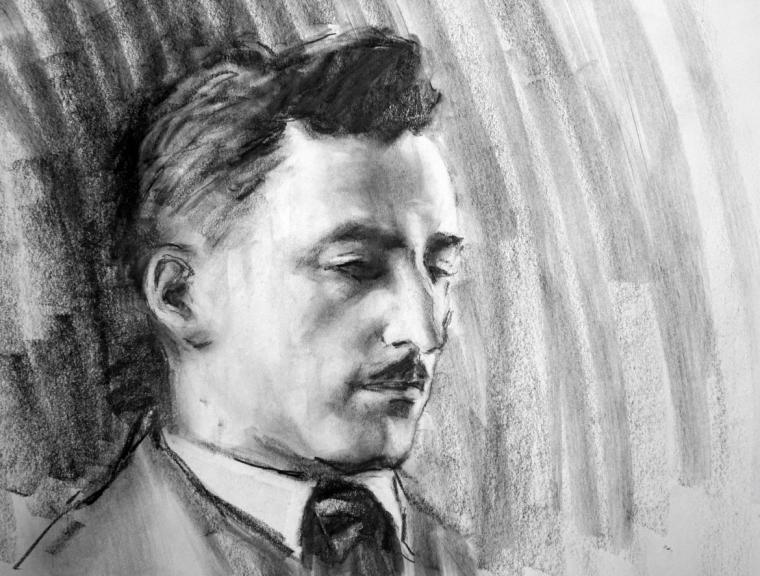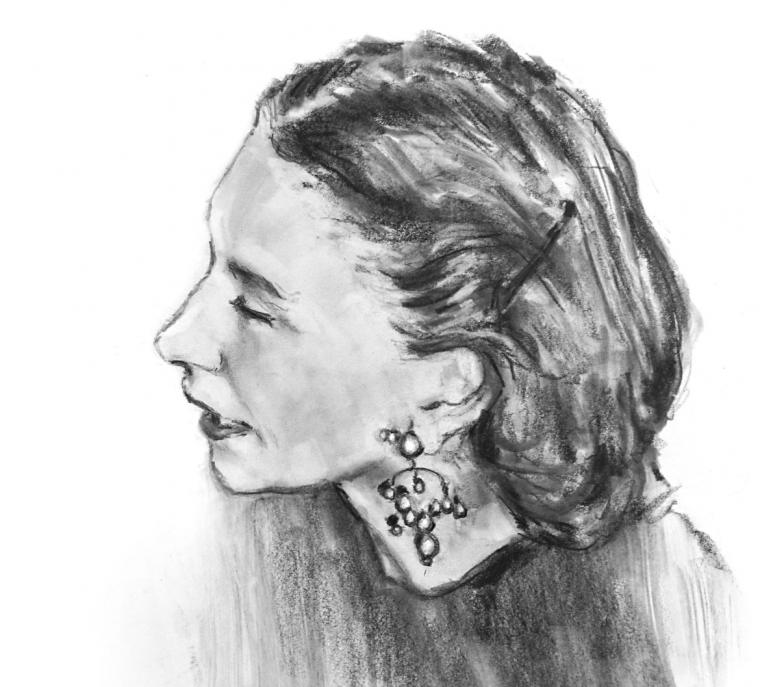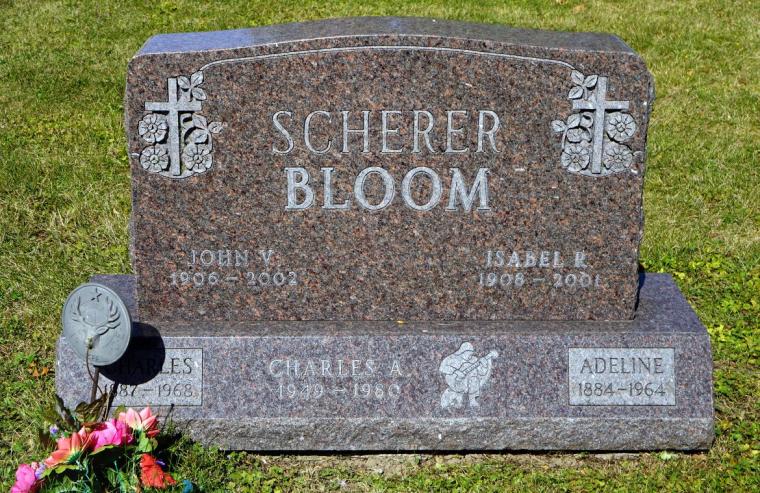
John Bloom drawing by Bruce Walters
Once upon a time … Isabel Scherer enrolled as a student at the Stone City Art Colony in the depths of the Great Depression. The colony, organized by Grant Wood with two partners, offered classes and created a supportive community for artists during the summers of 1932 and 1933.
There Isabel met John Bloom, who had caught Grant Wood’s attention with his entry in Iowa State Fair’s art competition. Wood invited Bloom to join him in the art colony, working as a groundskeeper in exchange for tuition and room and board.
Bloom would be one of Grant Wood’s assistants, working on murals funded by the federal government’s Depression-era relief program for artists. He assisted Wood in painting murals for the Des Moines Public library and Parks Library at Iowa State University before receiving a commission to design and paint a mural for the new Dewitt Post Office.
John and Isabel married in 1938. They set up their home and studio at the old Davenport Masonic Lodge and then at 927 West Eighth Street. Isabel continued her life-long interest in clay sculpture. John would work as an industrial designer and artist for the Army Corps of Engineers, while she became involved in the local art community, taught, and exhibited sculptures locally. All while raising three children.
Isabel would host a children's-art television program beginning in 1953. As she stated in the Iowa Women Artists’ oral history project, “I had a TV show for a couple years at WOC. It was called Make Believe. I modeled the characters of the old fairy tales and put clothes on them, and then I told the story, and I gave them a lesson in modeling in clay. It was a lot of work – I worked all week painting the background.”

A decade later, the family moved to the Village of East Davenport and Isabel began to sell her artwork, specializing in sculptures cast in concrete. Sixty years on, her sculptures are as popular as ever, selling locally at the Isabel Bloom Headquarters Studio Showroom & Tour Center on 736 Federal Street in Davenport.
The final chapter in Isabel Bloom: the Artist and her Legacy begins with: “Isabel was many things to many people. To her children, she was a devoted mother who canned raspberries, sewed patches on the knees of her jeans, and planned family picnics. To her husband John, she was a partner for over sixty years. To her contemporaries and friends, she was often the life of the party. To the public, she was an artist.”
One of Isabel’s cement sculptures is placed outside of the library on the Bettendorf Learning Center. It is a woman holding an open book before a separate sculpture of a listening child. The pair of sculptures lovingly capture a moment when the woman pauses in her reading to show an illustration. This set was initially placed at the entrance of the Bettendorf Library when the library was located on Grant Street.
A life-sized bronze sculpture of two boys rising from a park bench is located on the Davenport riverfront. This 1992 sculpture by Louis Quaintance is based on a 1940s lithograph John Bloom created from a sketch he made at LeClaire Park when he saw two boys watching the W.J. Quinlan Ferry.

John Bloom returned to exhibiting his work following his retirement in 1969. In the 1980s, he would complete several large murals. One, Shocking Oats, is in the Figge Art Museum’s permanent collection. Painted on Masonite in 1987, it was based on a study that he made decades before. Bloom’s murals are painted and composed in the regional style epitomized by Grant Wood. The subjects are ordinary people working. The simplicity of forms and rich patterning is also at the core of Isabel’s sculptures.
Isabel died in her nineties in 2001; John died the following year. They are buried together in Mount Calvary Catholic Cemetery (plot: New-6-465 W 1/2).
I began this story with “Once upon a time.” Isn’t that how a classic love story should begin?
Bruce Walters is a Professor Emeritus in Art conferred by Western Illinois University.
This is part of an occasional series on famous (or infamous) people buried in cemeteries in the Quad Cities, and their history that is not so well-known today. If there’s a piece of history buried here that you’d like to learn more about, e-mail the location and a brief description to BD-Walters@wiu.edu.










